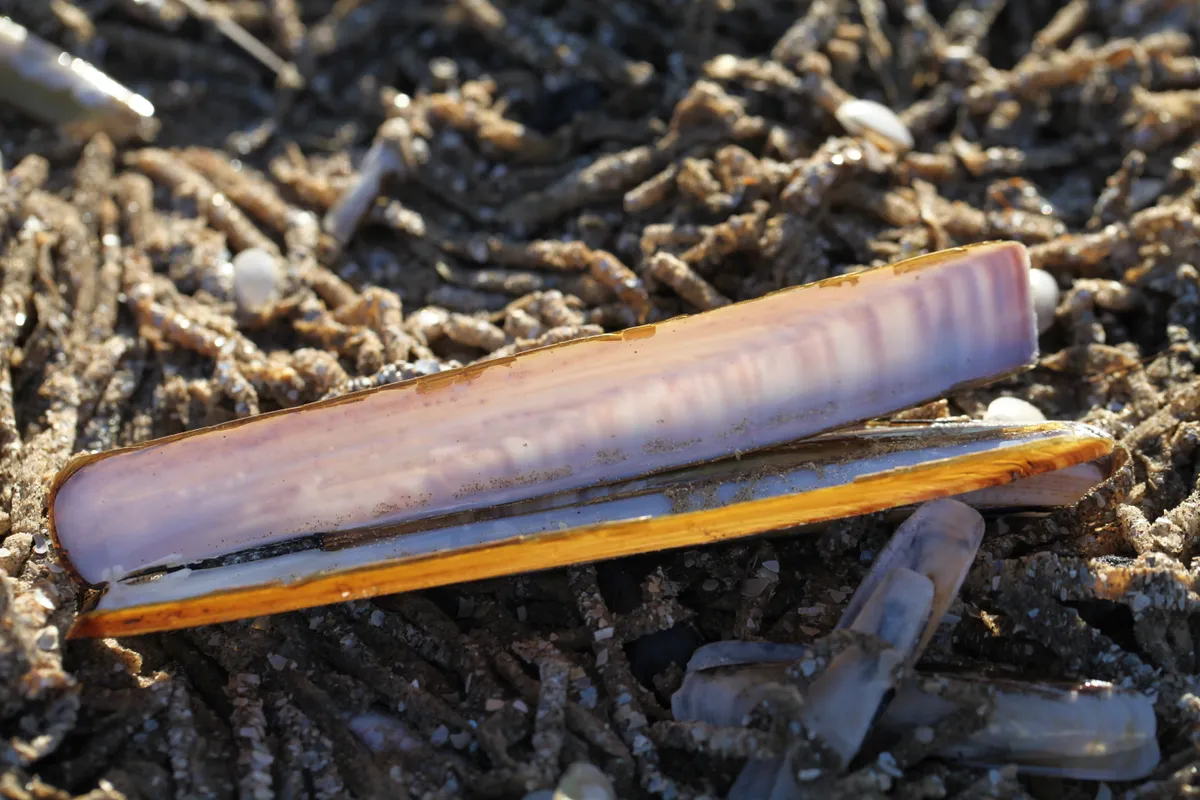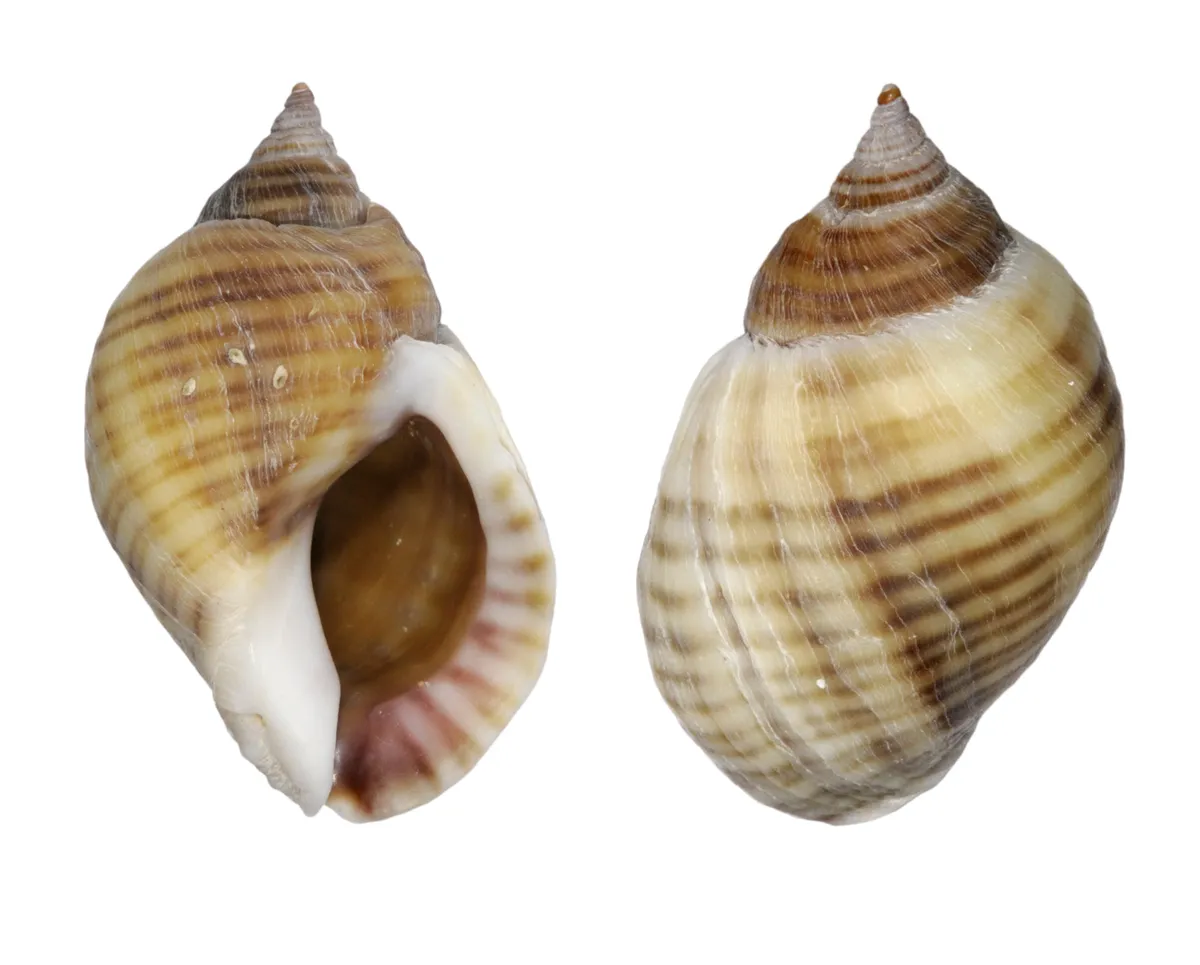A day at the beach isn’t complete without a sandcastle decorated with seashells, or a few in the pocket to bring home. Adorning bathroom shelves and windowsills, seashells are not only fond reminders of a visit to the sea, but they have many stories to tell about the animals that made them and the wonders of their watery world.

Seashells have so many stories to tell us about the sea, what lives there and how everything is connected – often in unexpected ways. Every day, as the tide rises and falls, new shells arrive on the beach and lie waiting for us to come along and find them. Next time you pick up a pretty seashell on the seashore, take a moment, as you admire it shape and form, to think about who made it and the life it might have had.
Any shell, after all, was once part of a living, breathing sea creature. But what exactly are they? How are they formed? And what animals use them? Our expert guide has all the answers...
What are seashells?
Every time you pick up an empty seashell, you’re holding a mollusc’s abandoned exoskeleton, which these soft-bodied animals use as a multi-purpose tool. This is their home, their place to hide and the attachment point for muscles to help them move. There’s a plethora of shells to find, made by different kinds of molluscs, in habitats all around the UK coasts.

Rocky shores and tide pools are home to lots of sea snails (gastropods) with elegant spiralling shells, including dog whelks and periwinkles. When it’s alive, a sea snail pokes its tentacled head out of its shell’s open hole and crawls along on a muscly foot.
At low tide, limpet-like chitons with ‘coat-of-mail’ shells creep about under rocks, their shells in eight plates across their backs. Sandy beaches are the domain of cockles, razor clams and other types of bivalves, each bearing a pair of crinkled and fan-shaped shells that clamp tightly together to keep their soft bodies tucked up inside.
Many bivalves burrow deep down in the sand and reach into the water with a snorkel tube, called a siphon, to breathe and filter-feed on tiny particles. You’ll often find single, disarticulated bivalve shells or pairs still joined together. Sometimes, you’ll stumble across the shells of bean clams scattered across sandy beaches like thousands of purple, orange and yellow butterflies.
How are seashells made?
Unlike crabs, lobsters and other crustaceans, which routinely shed their shells and grow new, bigger ones, molluscs keep their shells throughout their lives and gradually expand them. Look closely at the inner-most whorl of a sea snail and you should be able to make out the tiny shell it had when it first hatched from an egg.
As it grows bigger, a mollusc uses its soft body tissue (the mantle) to lay down more layers of shell made chiefly of calcium carbonate, the same chalky material as a hen’s eggshell. Like tree rings, seashells have seasonal growth lines that are sometimes visible from the outside. Counting the most prominent lines across a bivalve shell can give you an idea of how old it was when it died.

Many marine molluscs live for several years; some for much longer. Ocean quahogs from the North Atlantic can live for centuries. One individual, nicknamed Hafrún, meaning ‘mystery of the ocean’ in Icelandic, lived for 507 years, making it one of the longest-lived animals ever to have had its age accurately measured.
Scientists use seashells, especially the long-lived ones, as climate archives that hold a treasure trove of detailed information about the changing ocean. Shells can tell the past temperature and acidity of seawater the molluscs grew in; they can even indicate when volcanoes erupted or hurricanes struck.
Why do seashells have different shapes?
Shells come in a seemingly endless variety of shapes, but in fact they’re all versions of the same basic pattern: a spiral. That much is obvious in snail shells and less so in clams and other bivalves, but their shells are indeed spirals, just ones that flare wide open.

The precise shapes of molluscs’ spiralling shells are a nod to their different habitats and modes of living and moving.
Scallops rest their flattened, fan-shaped shells on the sandy seabed. Occasionally, they stir themselves into the water column and swim for short distances by clapping their shells together like castanets and squirting propulsive water jets through their siphon.
Turret or auger shells are long and slender, resembling little unicorn horns, enabling them to drill down into sand and mud.
Limpets have volcano-shaped shells that they clamp down tightly to rocks so they don’t get swept away by waves or pecked off. Their conical shells are difficult to grasp, and they use their foot like a suction cup and glue themselves in place with specialised slime.
Molluscs often ramp up their defences by adding corrugations and spines to their shells, making them difficult for predators to handle. Spiny oysters in the Mediterranean are covered in prongs that encourage seaweeds and sponges to settle and grow, giving them camouflage on rocky reefs.
How do living creatures use shells?
Humans aren’t the only shell-collecting animals. Carefully watch the seashells in a rockpool and you might spot some that aren’t gliding slowly around, but scuttling. Hermit crabs have lost the ability to make their own shells and must instead borrow empty ones.

When the time comes for hermit crabs to find a bigger shell, they organise themselves into orderly queues, with the smallest individual at one end and the largest at the other. Two big crabs may tussle over the biggest, best shell. Once their contest is decided and the victor claims the prize, all the other smaller crabs move into the vacated shell of the crab next in line.
Down in the deep sea, carrier shells (Zenophoridae) pick up empty seashells, as well as pebbles and coral fragments. They glue these bits and pieces onto the outside of their shells as extra defence from predators.
And the most intelligent molluscs of all, the octopuses, have learned how to use seashells as tools. Like hermit crabs, the octopuses’ ancestors gave up the ability to make shells long ago. But today, they can sometimes be observed with a pair of matching clam shells in their possession. When the octopus feels threatened, it quickly fashions them into a shelter.
How do seashells get their colours and patterns?
Lots of molluscs add a shiny layer of mother-of-pearl, or nacre, to the insides of their shells. Abalone are some of the shiniest shells, their insides swathed in oily greens and blues, and people often use them to make jewellery, buttons and decorative inlays in furniture.

Yet the gleaming interiors of these shells evolved not for beauty, but for strength. Engineers have discovered the nanostructure of nacre helps to make shells crack-proof. Nacre, made from essentially the same calcium carbonate as the outer shell, is laid down in a series of tiny, brick-like layers held together in a stretchy matrix of chitin – the chief structural material of insect exoskeletons. This can stop cracks from spreading when a crab grabs a shell in its claws, or when a fish bites down. If you find a seashell that’s shiny on the outside, it’s been worn away in the tumbling waves, revealing the nacre underneath.
Other molluscs secrete pigments in their shells that help hide them in their habitat. Flat periwinkles have rounded shells that resemble the green and brown gas chambers of the bladderwrack seaweeds they inhabit along rocky shores. Janthina snails float below the sea surface, suspended from a raft of air bubbles and their shells are deep violet-blue, camouflaging them in open water.
Meanwhile, the colours and patterns on many seashells remain much more mysterious and serve no obvious purpose. The rayed artemis, for instance, is a bivalve common along European shores with a shell covered in saw-tooth zigzags. It spends its time burrowed deeply in sand, mud and gravel, so those patterns aren’t seen until empty shells wash up on a beach.
Why do seashells have different patterns?
No-one has yet worked out exactly why molluscs evolved their shell patterning. One idea is that they use their patterns as a marker to guide them as they lay down more shell material.

Shell-making is not a continuous process. A mollusc needs to remind itself where the previous growing season left off, so it can align its mantle and continue to grow in the right places, otherwise it could easily grow a useless, wonky shell.
Can seashells tell us what the molluscs eat?
There are signs to look out for on seashells that will tell you what kinds of food their resident molluscs ate when they were alive. Herbivorous, seaweed-eating snails, such as periwinkles, tend to have smooth, rounded openings to their shells. You can spot predatory snails by the notch in their shells. This is where their elongated nose (or proboscis) pokes out and sniffs the water for chemical traces wafting from their prey. A sea snail follows its nose and creeps up on its target.

Main image: Cockleshell on the beach. © Getty






